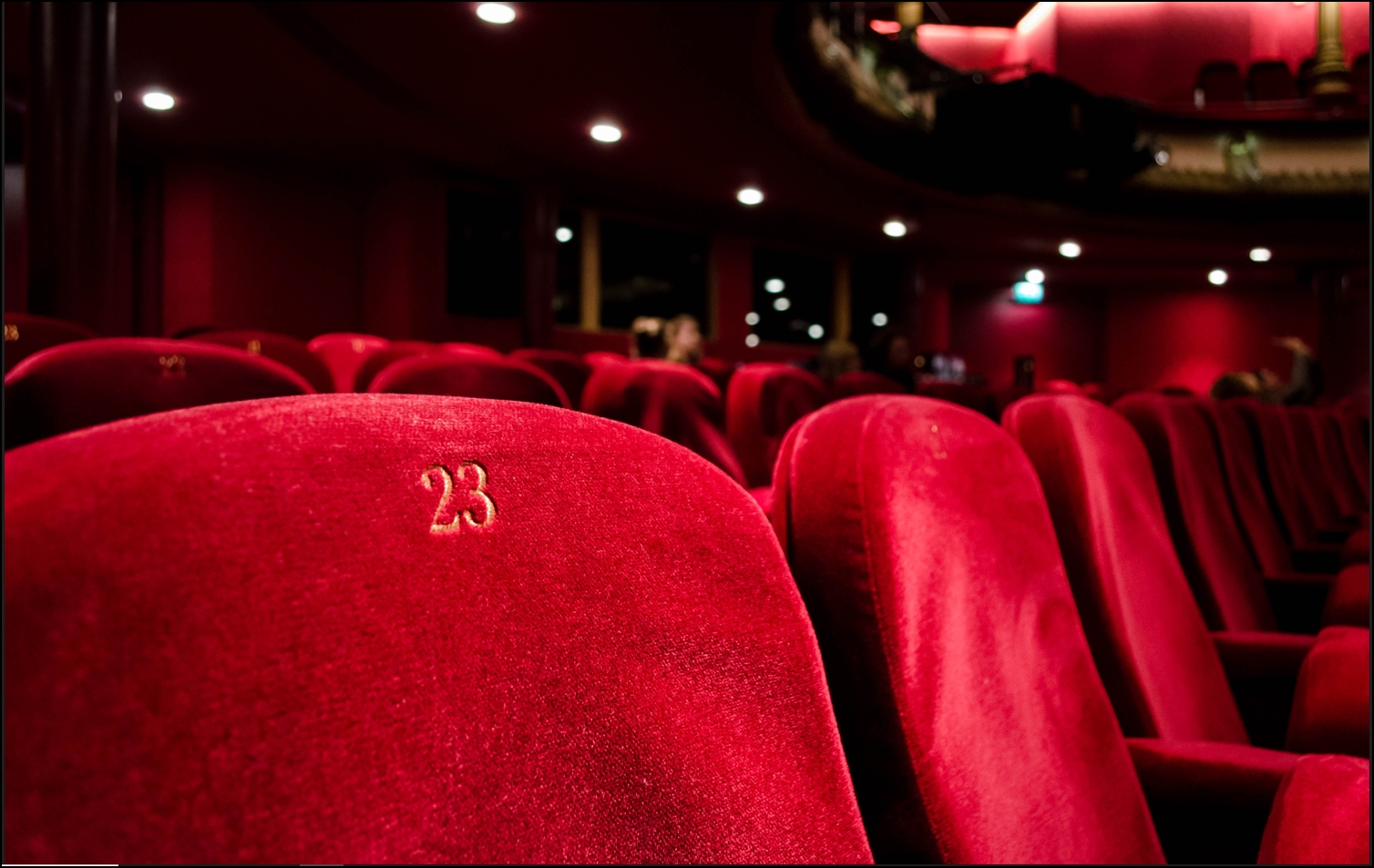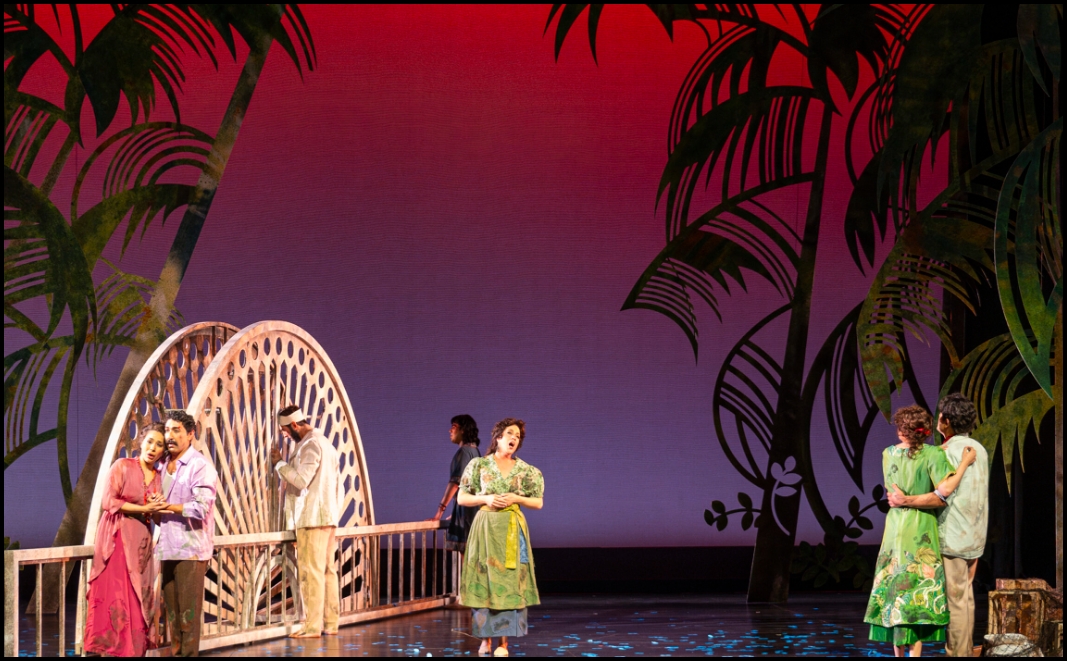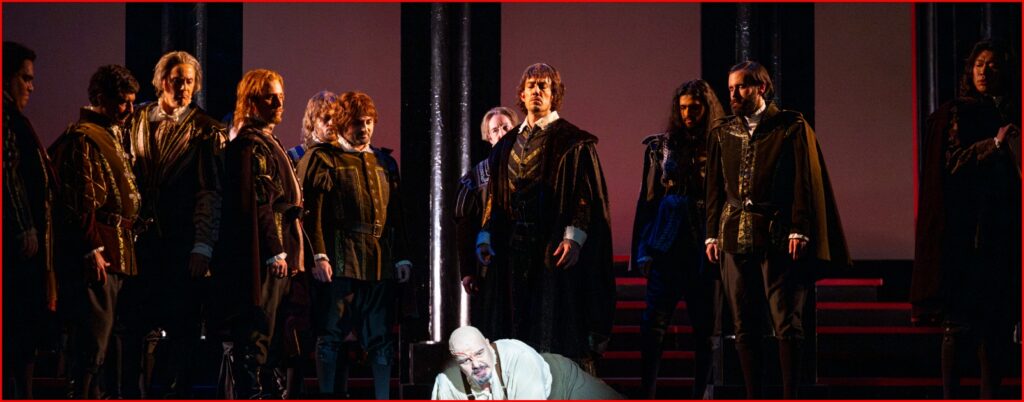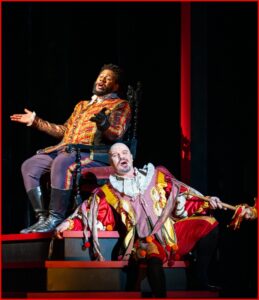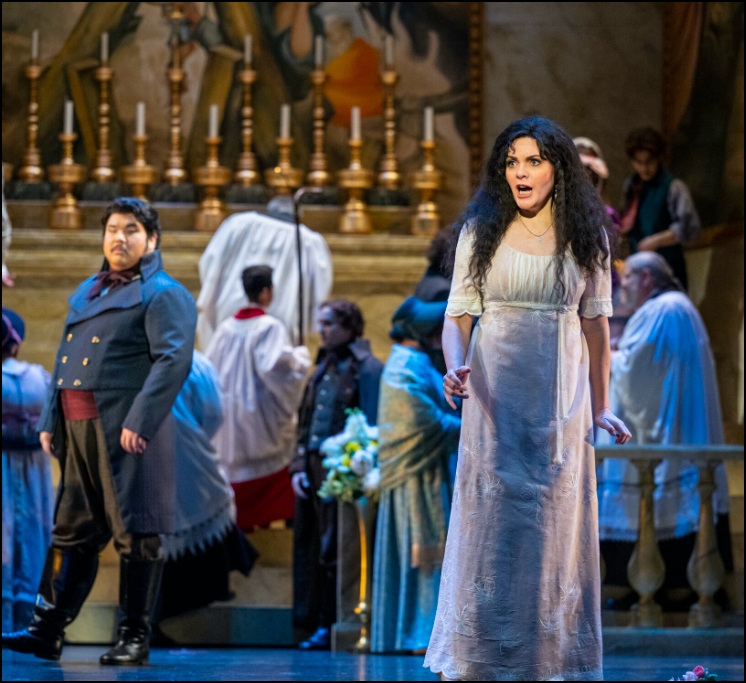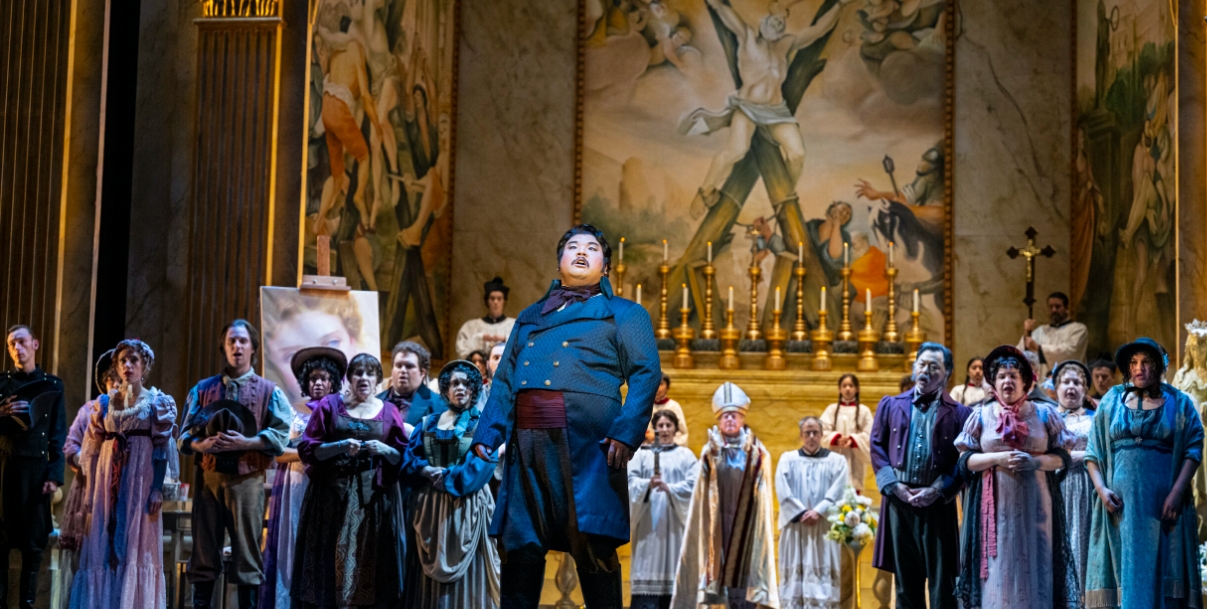by Jeff Dunn
In one of Lisa Kleypas’ bestselling romance novels, the leading character Lillian, gives advice to her younger sister about the act of love: “You wouldn’t want to swoon, or you might miss something.” In Daniel Catán’s 1996 opera, resplendently on stage in San Jose on May 3rd, a long-unfashionable surge of romanticism floods out of mouths and instruments with the force of a firehose. A lot is missed in the process, but does it matter?
“… (this opera) …will flow far into the 21st century….”
Soaring Pucciniesque vocal lines, shimmering woodwinds out of Ravel’s Daphnis et Chloé augmented by marimbas, swashbuckling brass pronouncements recalling Wolfgang Korngold’s opera and film scores–all of these inundate the audience at considerable volume throughout Act 1 like the Amazon itself in flood. Only a few quieter moments allow much time for breathers until Act 2. But by that time, in spite of the over-intensity, I was beginning to realize I was experiencing a new masterpiece performed in a forgotten style: an opera where melody takes precedence over system, where music takes precedence over libretto, and, with thanks to Stage Director Crystal Manich, where librettos are respected and not mauled (i.e., regietheater).
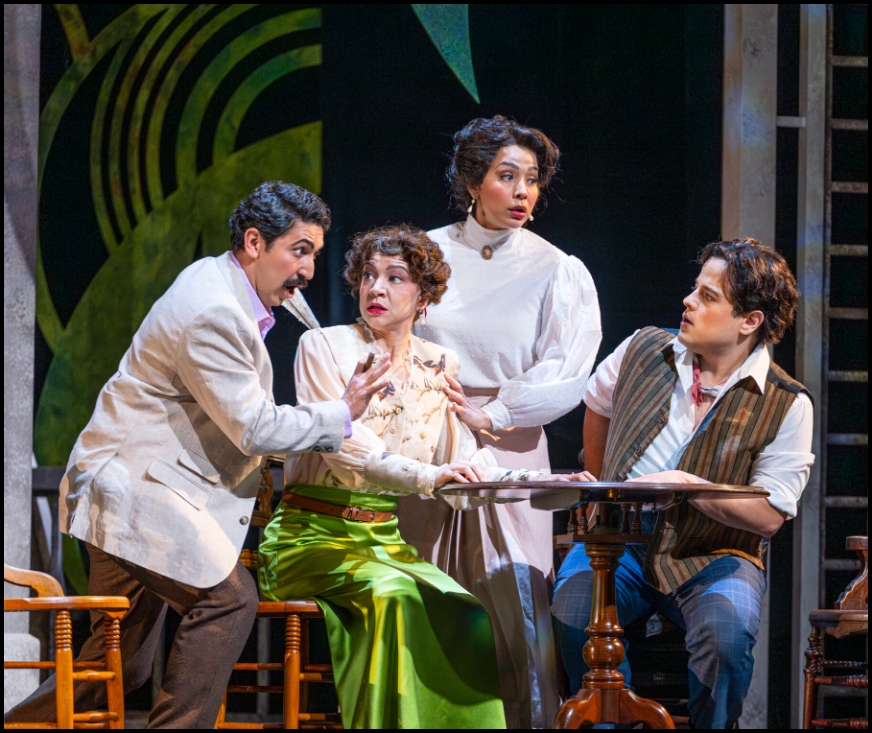
Manich neatly summarizes the river-journey plot as the evolution of three kinds of love in three couples: “blossoming” (Arcadio & Rosalba), “rotting” (Alvaro and Paula) and “lost” (Florencia and the deceased Cristobal). The journey is mediated in the physical realm by the ship’s Captain (sympathetic bass-baritone Vartan Gabrielian) and in the spiritual by deckhand Riolobo (warm baritone Ricardo José Rivera). Tenor César Delgado was a fine, youthful Alvaro; soprano Alexa Anderson a standout as Rosalba—I want to hear more from her ASAP. Baritone Efrain Solis and mezzo Guadalupe Paz were emotionally and musically on the money as the sniping couple Alvaro and Paula. And Elizabeth Caballero’s uplifting Florencia seemed like a gift from soprano heaven—her concluding aria melted all the plastic in the house.
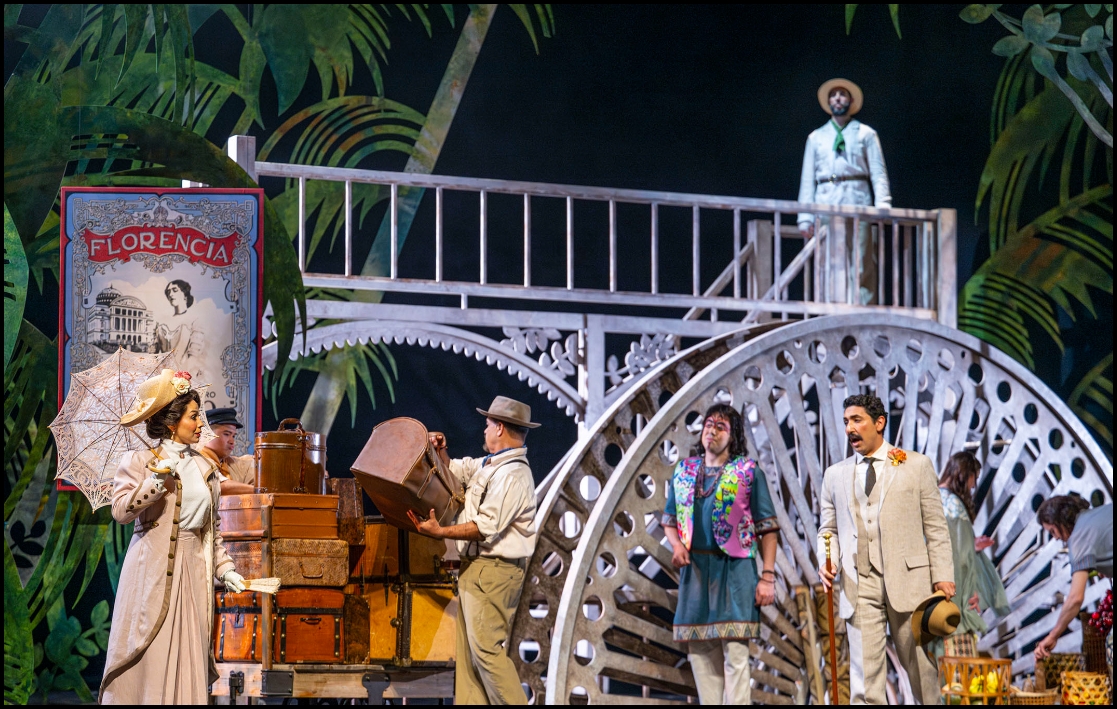
This reviewer felt Liliana Duque-Piñeiro’s stage design was far superior to the recent Metropolitan opera’s overly abstract and distancing version. Its dangling jungle, like the music, was embracing rather than pictorial. The performance I attended was led by Assistant Conductor Johannes Löhner, who did passionate justice to the 30-pound score. As he put it in a subsequent interview:
“I will die on any hill for this score … The orchestration, it’s massive. … It’s like Puccini meets [Richard] Strauss, but it never feels plagiarized. It always feels genuine. It comes from the heart.”
I blame Catán, not him, for the music that made an iguana in an early scene sound like a brontosaurus.
I predict that Florencia en el Amazonas, with its voluptuous river of sound, will flow far into the 21st century.
-30-
 ASR’s Classical Music Section Editor Jeff Dunn is a retired educator and project manager who’s been writing music and theater reviews for Bay Area and national journals since 1995. He is a member of the San Francisco Bay Area Theatre Critics Circle and the National Association of Composers, USA. His musical Castle Happy (co-author John Freed), about Marion Davies and W.R. Hearst, received a festival production at the Altarena Theater in 2017. His opera, Finding Medusa, with librettist Madeline Puccioni, was completed in January 2023. Jeff has won prizes for his photography, and is also a judge for the Northern California Council of Camera Clubs
ASR’s Classical Music Section Editor Jeff Dunn is a retired educator and project manager who’s been writing music and theater reviews for Bay Area and national journals since 1995. He is a member of the San Francisco Bay Area Theatre Critics Circle and the National Association of Composers, USA. His musical Castle Happy (co-author John Freed), about Marion Davies and W.R. Hearst, received a festival production at the Altarena Theater in 2017. His opera, Finding Medusa, with librettist Madeline Puccioni, was completed in January 2023. Jeff has won prizes for his photography, and is also a judge for the Northern California Council of Camera Clubs
| Production | Florencia en el Amazonas |
|---|---|
| Libretto by | Marcela Fuentes-Berain |
| Stage Direction | Crystal Manich |
| Producing Company | Opera San Jose |
| Production Dates | Thru May 5th |
| Production Address | California Theater - 345 S First St, San Jose, CA 95113 |
| Website | www.operasj.org |
| Telephone | (408) 437-4450 |
| Tickets | $50- $175 |
| Reviewer Score | Max in each category is 5/5 |
| Overall | 4.5/5 |
| Performance | 4.5/5 |
| Music | 4.5/5 |
| Libretto | 4.0/5 |
| Stagecraft | 4/5 |
| Aisle Seat Review Pick? | YES! |
